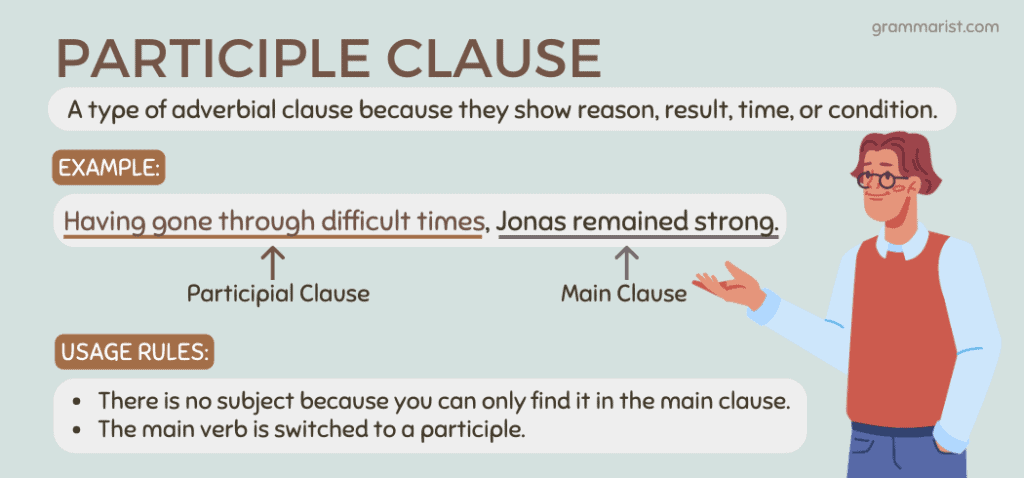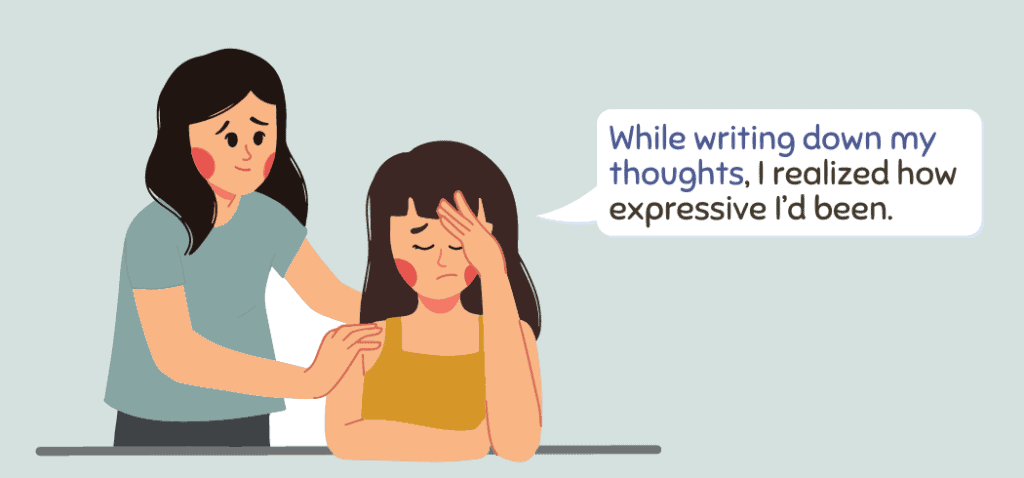What is a participle clause? How is a participle formed? These might be the kinds of questions running through your mind. As an author and former editor, they’re definitely questions I’ve heard before. Participle clauses in English grammar allow us to be more informative without making complicated sentences.
Let’s take a closer look at the definition and types of participle clauses. I also provided a list of examples and a worksheet for you so you can test what you learned.
What Is a Participle Clause?

There are many types of clauses in the English language, such as finite and non-finite clauses. But a special kind of clause called a participle clause always includes the participle forms of verbs to express information economically.
The use of participles in grammar varies along with the participle rules. But when joined in clauses, they always need the main clause to form a complete sentence. Here are some examples of participle clauses in sentences.
- Having gone through difficult times, Jonas remained strong.
- Delighted by his father’s coming, James cooked a hearty meal for the family.
The underlined clause in each sentence is the participial clause. Notice how both sentences show relationships between clauses.
Participial clauses are a type of adverbial clause because they show reason, result, time, or condition. They are also subordinate, non-finite clauses.
How to Form a Participle Clause
There are a few things to remember about the usage rules of participle clauses. First, there is no subject because you can only find it in the main clause. You’ll also notice that the main verb is switched to a participle. For example:
- Having seen the sunset, Linda headed back inside the car.
Check whether the action in the participle clause occurs at the same time the action does in the main clause. You also have to note whether it uses the active or passive voice. For example:
- While looking at Reena, Ron smiled.
This example shows simultaneous action in the active voice. Although not a writing rule, the active voice is the preferred form of writing.
Present Participle Clauses
The present participle clause starts with the -ing form verbs, the same form we use in continuous tenses. For instance, is/are running is the present continuous form of run. But the present participle is only running, making it a non-finite verb form.
It’s also worth noting that present participles are similar to active verbs. We use them for active clauses instead of passive clauses.
The use of participles in grammar is for actions happening at the same time. Here are some examples of sentences:
- Waiting in line, I found Gigi buying ice cream.
You can also use it for actions happening consecutively. For example:
- Reading her quick explanation of adverbs, I thought I needed more extended video explanations.
Clauses With Prepositions

One of the present participle clause rules is that they follow conjunctions and prepositions, such as when, while, before, on, after, without, and instead of. The clause also often looks like a preposition phrase. Here are some examples.
- While writing down my thoughts, I realized how expressive I’d been.
- After taking everything into consideration, the board has decided to promote him.
In the example above, the prepositional phrase is after taking everything into consideration.
Past Participle Clauses
A past participle clause involves the past participle form of verbs. Regular verbs usually end in -ed, while irregular verbs change their spellings. Use past participles for passive clauses. For example:
- Saddened by the news, Lance stayed in his room for two days.
You can also use them to replace passive-voice finite clauses. For example:
- Worried about the storm, people began evacuating.
The original sentence may mean that the people were worried about the storm and began evacuating.
Use the past participle clause to create a delay of time between the recent and main events throughout a period of time. For example:
- Stressed about failing the exam, she answered the speaking exercises provided by the teacher.
Perfect Participle Clauses
Perfect participle clauses use the perfect form of a verb and can be used in active or passive sentences. For example:
- Having received the email, George instantly opened it.
There are many explanations for the use of perfect participle clauses. For instance, you can also use this type of participle clause to indicate a finished action or an earlier action before another one. Consider the example below. Is this sentence correct?
- Having finished her chores, Brianna went to her friend’s house to celebrate.
This sentence is correct as it shows a participle clause used as a sequential clause. The previous action is Brianna finishing her chores, followed by her going to her friend’s house.
It’s an iron-clad rule in perfect participle clauses that they show actions that are not consecutive. Here is another example.
- Having imposed a weak disciplinary action, many employees became shocked.
Let’s Review Participle Clauses
Participle clauses are subordinate clauses that combine several pieces of information without complicating the sentence. They are present in numerous forms and texts with literary, academic, and journalistic styles, shortening passive and active sentences.
Always follow the grammar rules for participle clauses. Remember that you have several options for showing verb tense when using participle clauses. You can also use them in the active or passive form.